Archives
- 2025-12
- 2025-11
- 2025-10
- 2025-09
- 2025-03
- 2025-02
- 2025-01
- 2024-12
- 2024-11
- 2024-10
- 2024-09
- 2024-08
- 2024-07
- 2024-06
- 2024-05
- 2024-04
- 2024-03
- 2024-02
- 2024-01
- 2023-12
- 2023-11
- 2023-10
- 2023-09
- 2023-08
- 2023-07
- 2023-06
- 2023-05
- 2023-04
- 2023-03
- 2023-02
- 2023-01
- 2022-12
- 2022-11
- 2022-10
- 2022-09
- 2022-08
- 2022-07
- 2022-06
- 2022-05
- 2022-04
- 2022-03
- 2022-02
- 2022-01
- 2021-12
- 2021-11
- 2021-10
- 2021-09
- 2021-08
- 2021-07
- 2021-06
- 2021-05
- 2021-04
- 2021-03
- 2021-02
- 2021-01
- 2020-12
- 2020-11
- 2020-10
- 2020-09
- 2020-08
- 2020-07
- 2020-06
- 2020-05
- 2020-04
- 2020-03
- 2020-02
- 2020-01
- 2019-12
- 2019-11
- 2019-10
- 2019-09
- 2019-08
- 2019-07
- 2019-06
- 2019-05
- 2019-04
- 2018-11
- 2018-10
- 2018-07
-
L-NMMA citrate In conclusion high methylation levels of CDKL
2020-03-20
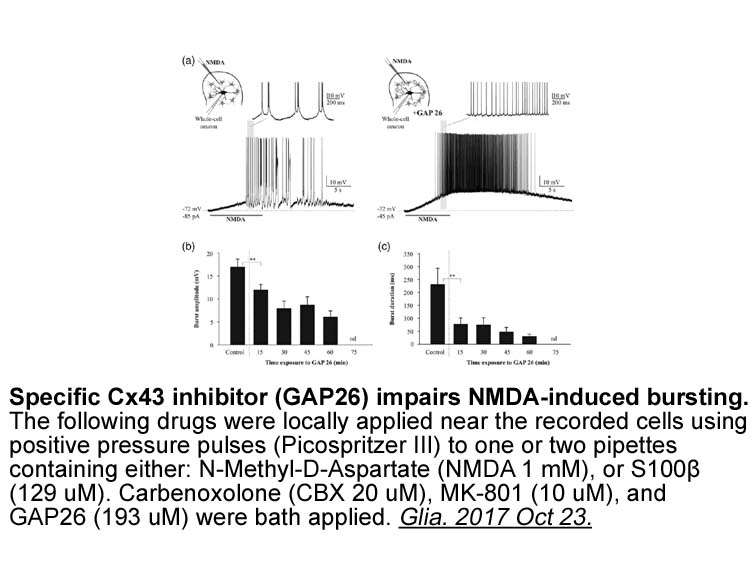
In conclusion, high methylation levels of CDKL2 were observed both in HCC cell lines and tissues, which showed a negative association with mRNA expression. Moreover, treatment with demethylation agent in HCC cell lines could upregulate CDKL2 mRNA expression. The discovery of the epigenetic modificat
-
Recently we have created CRISPR Cas mediated
2020-03-20

Recently, we have created CRISPR/Cas9-mediated col14a1a knockout fish to interrogate the function of col14a1a during regeneration using the caudal fin model. Using AFM, we showed that collagen XIV-A transiently acts as a molecular spacer responsible for BM biomechanics possibly by helping laminins i
-
The strong adsorption of amines to the
2020-03-20
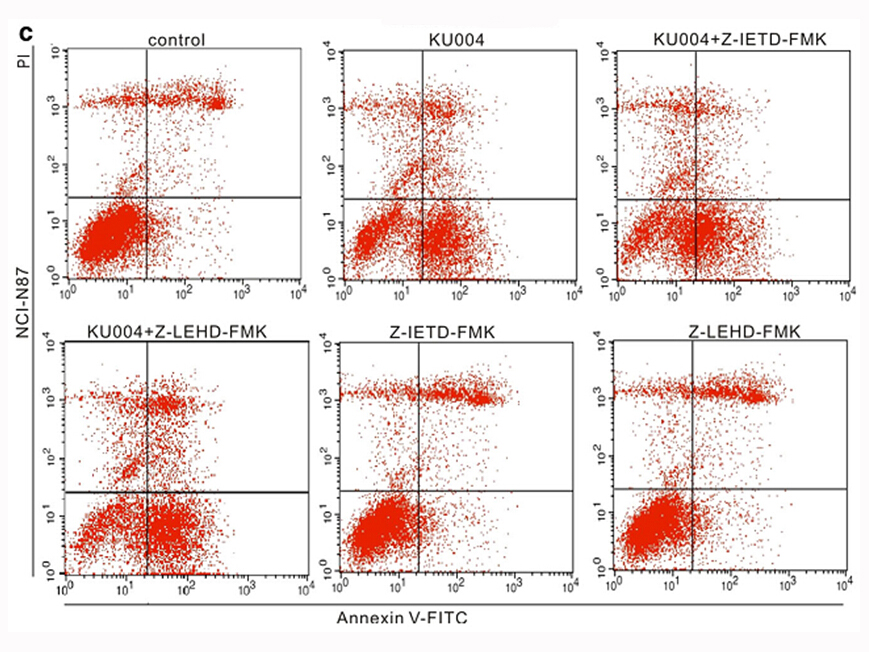
The strong adsorption of amines to the stationary phase of gas chromatography (GC) columns causes issues such as tailing, ghosting and low reproducibility [12], [13]. A common practice to overcome this problem is the chemical derivatisation of amines prior to GC analysis [14]. Comprehensive reviews
-
Recent studies show that the expression and
2020-03-20
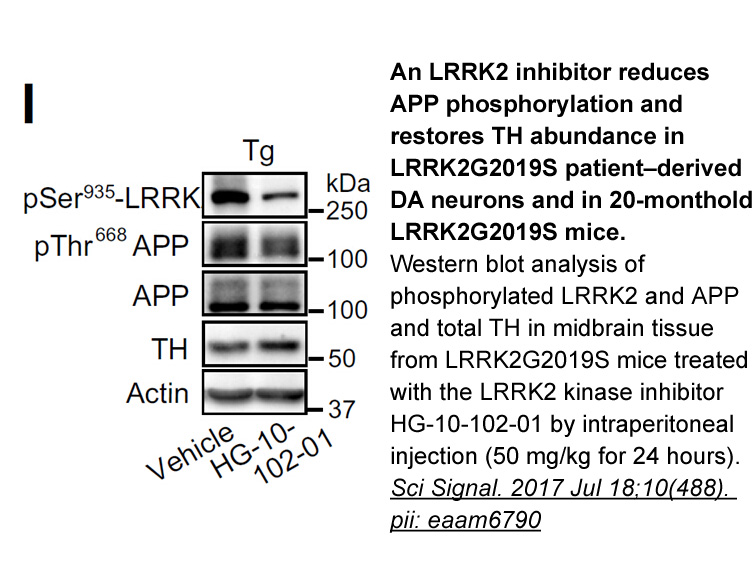
Recent studies show that the expression and function of some ion channels such as voltage-gated potassium channels, sodium channels and calcium channels are closely related to the proliferation, migration, and invasion of tumor cells [40], [41], [42]. Firstly, the expression of ion channels is chang
-
br Introduction Estrogens play an important role in the
2020-03-20
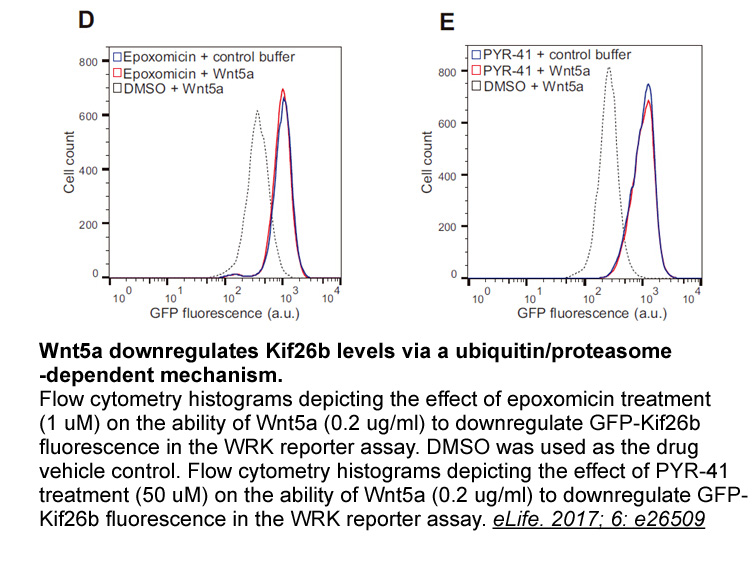
Introduction Estrogens play an important role in the 7026 (Arevalo et al., 2015). During several decades, estrogen withdrawal in women has been associated with cognitive impairment, increased Alzheimer\'s disease (AD) risk (Pike, 2017) and with psychiatric disorders such as schizophrenia (Kulkar
-
Furthermore we found that expression of
2020-03-18
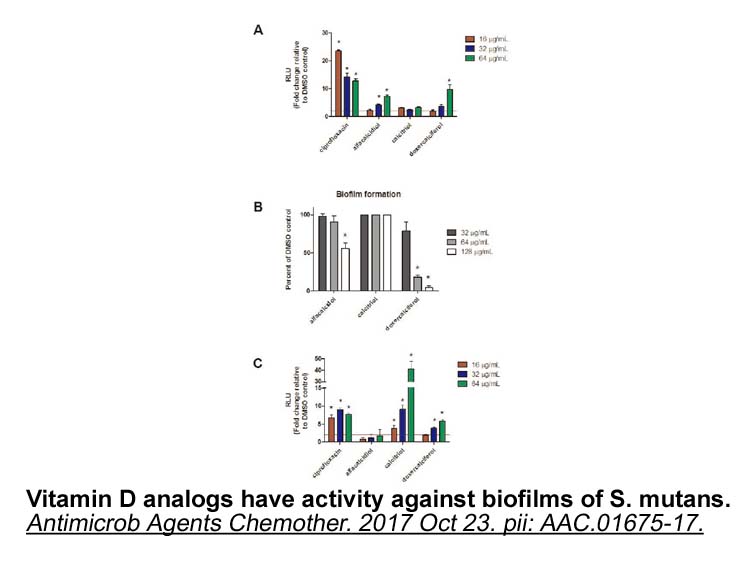
Furthermore we found that expression of two C1 nodule cysteine proteases, Glyma.06G283100 and Glyma.06G174800, changed very little under drought despite the two proteases having similarity to the Arabidopsis senescence-related SAG12 gene with 62% similarity by Glyma.06G283010 and 58% by Glyma.06G174
-
Proteins that associate to PCNA are characterized by
2020-03-18
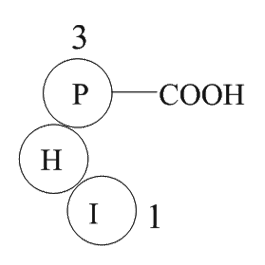
Proteins that associate to PCNA are characterized by having conserved motifs as the PCNA-interacting protein (PIP) motif [29,30], its variant PIP-like motif [31,32] or the APIM motif (Alk B homologue 2 PCNA interacting motif [33,34]); for instance, p21 contains a PIP motif [30], and DNA polymerases
-
br Introduction Proteins therapeutic can
2020-03-18
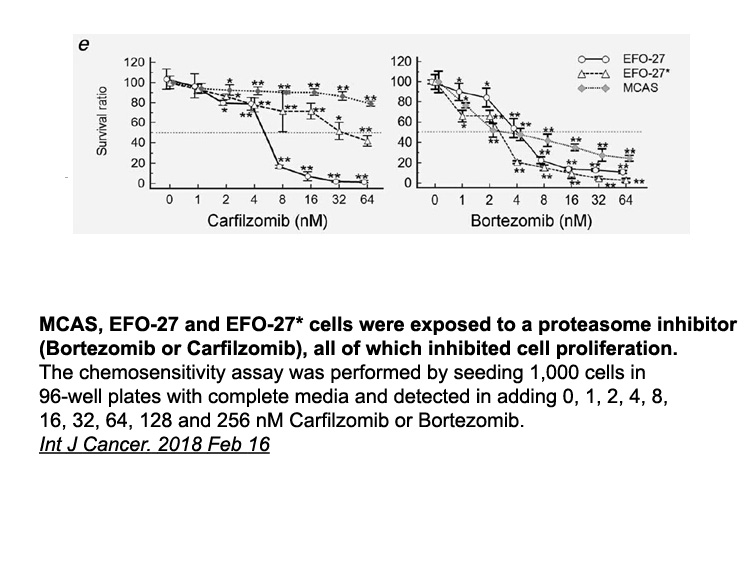
Introduction Proteins therapeutic can be defined as proteins that are either naturally produced in the body or created in the laboratory and introduced into the patient with the aim of improving or curing a pathological condition. They are usually acquired from either microbial Tirapazamine or b
-
The intestinal cholesterol absorption markers
2020-03-18
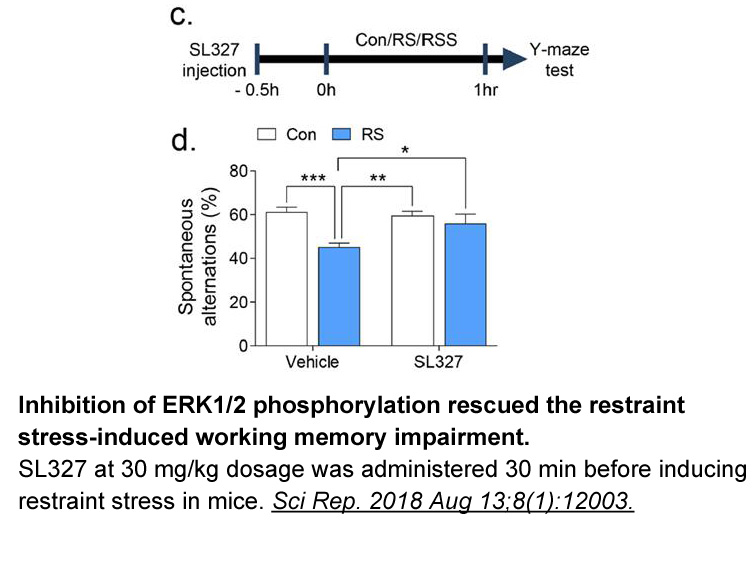
The intestinal cholesterol Pimozide markers sitosterol and campesterol to cholesterol levels were significantly lower in Villin-Tgif1 mice compared to wild type mice, irrespective of diet. However, the decrease was less pronounced in Villin-Tgif1 mice fed a chow diet (∼20–30%) compared to mice fed
-
In the present study the A P
2020-03-18
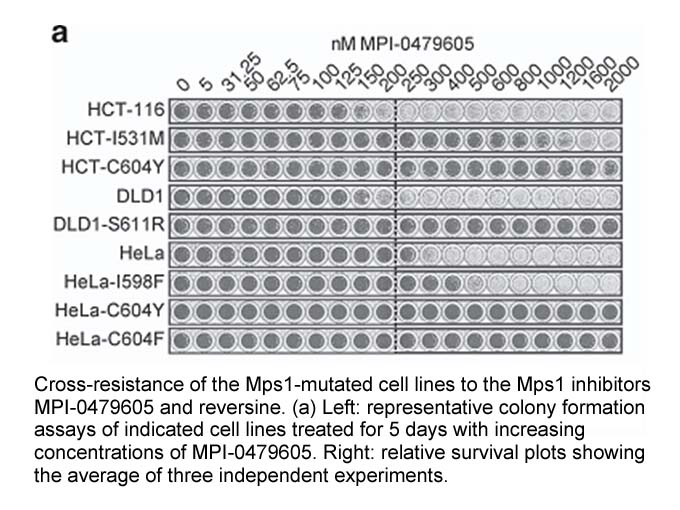
In the present study, the A/P ratio in the MCF-7 cell line was significantly increased by the combination of 1 nM E2 and progestogens, except P4, as well as by10 nM E2 combined with NET. The similar findings were also noted by several reports [16], [17], [18], [19], [20] in which progestogens combin
-
br As DAPK is dependent on Ca CaM for its
2020-03-18
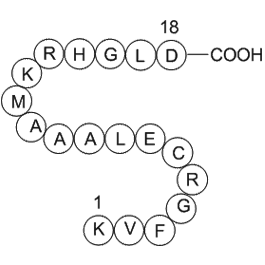
As DAPK1 is dependent on Ca2+/CaM for its activity, its role in induction of autophagy is Ca2+-dependent and will be described in Section 5.1. LRRK1 and 2 were however shown to regulate autophagy in numerous studies where the role of Ca2+ was not investigated, and these mechanisms will be describe
-
Although the crystal structures of Atg C and
2020-03-18

Although the crystal structures of Atg4C and Atg4D are not available, their three dimensional structures can be acquired by homology modeling, using the structure of Atg4B as a template (Zhang, Li, Ouyang, Liu, & Cheng, 2016). In that model, the catalytic triad is conserved (Cys110/Asp345/His347 for
-
The transcriptome analysis of barley seeds in two tissue fra
2020-03-18
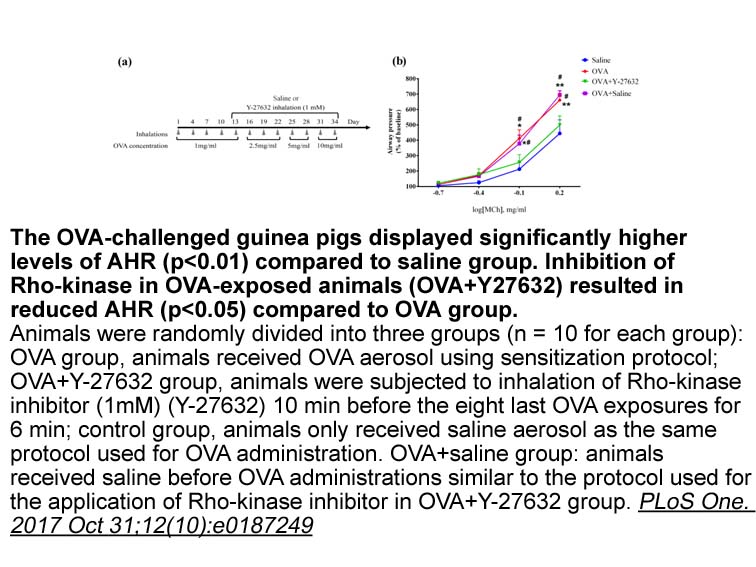
The transcriptome analysis of barley seeds in two tissue fractions: starchy endosperm/aleurone and embryo/scutellum, during maturation, desiccation and germination, revealed the large group of GA-responsive genes (Sreenivasulu et al., 2008). These transcripts have been divided into two groups. Nearl
-
br Materials and methods Male Hartley
2020-03-18
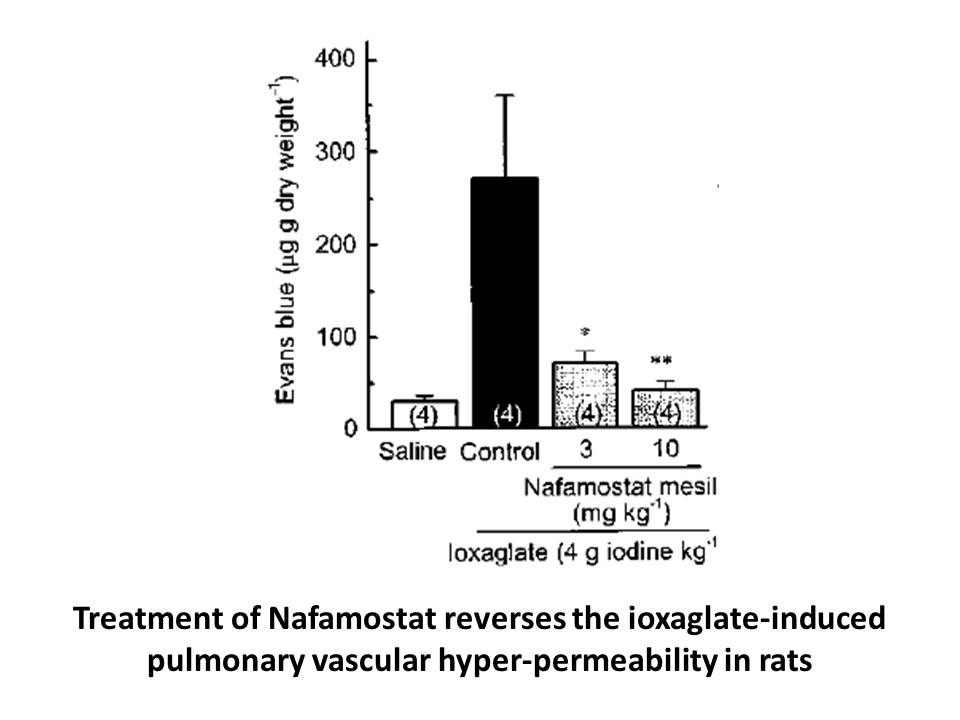
Materials and methods Male Hartley guinea pigs (300–350g) were obtained from National Laboratory Animal Center, Taiwan. LTD4, LTC4, LTE4, LTB4, montelukast and BAY u9773 were purchased from Cayman Chemical, Ann Arbor, Michigan; Carbachol, atropine, l-serine, boric acid, l-cysteine and all buffer
-
Sulbactam Furthermore we explored the effect of PKC on SIRT
2020-03-17

Furthermore, we explored the effect of PKCζ on SIRT6 phosphorylation. Accumulating data showed that aPKC isoforms are involved in regulating lipid metabolism [41], [42], [43], [44], [45], [46], [47]. The aPKC activity was reported to play a dominant role in normal insulin signaling by activating PI3
16526 records 893/1102 page Previous Next First page 上5页 891892893894895 下5页 Last page